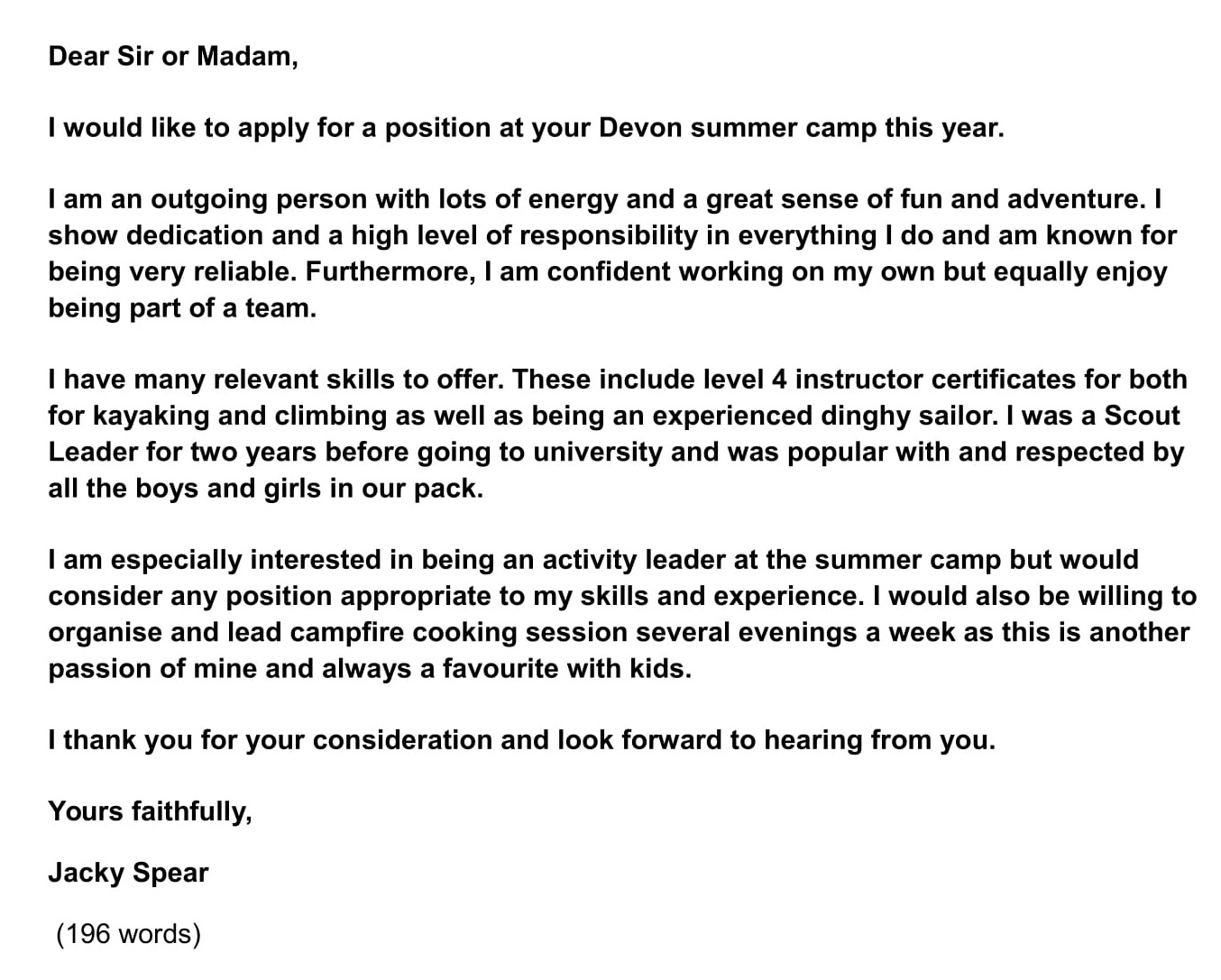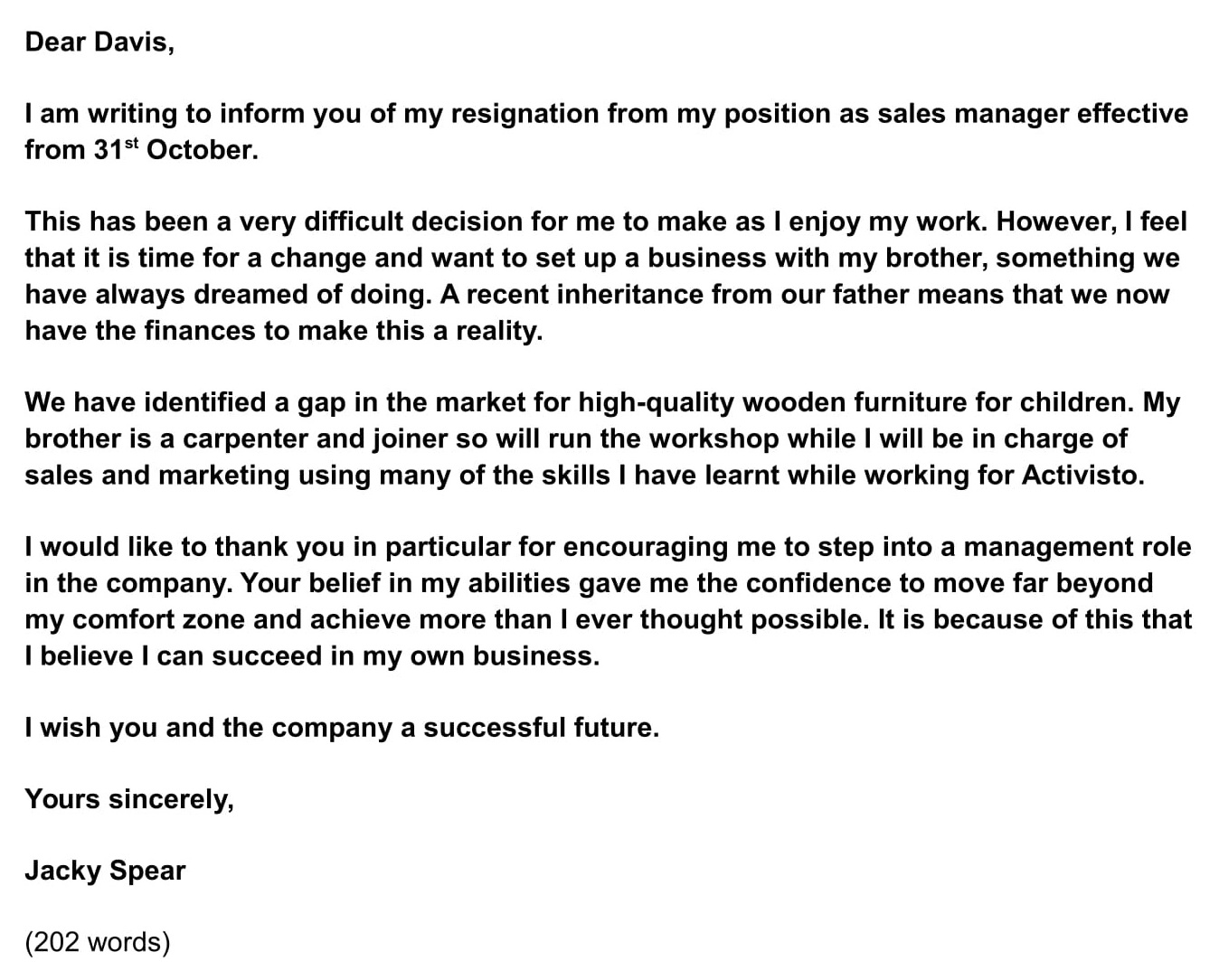IELTS Letter Writing Samples
How To Write an Application or Resignation Letter
This lesson
includes two IELTS letter writing samples. The first is an application letter
which I show you how to plan and write step-by-step. The second is an example
of a letter of resignation.
Here’s what the lesson includes:
- Question structure
- Letter structure
- Formal or informal?
- Greeting & signoff
- Generating ideas
- Sample
letters
Question structure
All questions for IELTS letters have the same structure. They are made up of 3 parts.
Part 1 – The topic.
Part 2 – The person you must write to.
Part 3 – What you should write about (listed as 3 bullet points).
Here is a sample question for an application letter with the 3 parts illustrated.
IELTS letter writing samples - question 1
|
You would like a job working in a summer camp which runs sports and outdoor activities for children and young people. Write a letter to the organiser of the summer camp. In your letter:
The topic Who you should write to What you should write about |
Understanding this will help you to quickly analyse the question and plan your answer. To help you plan, use the letter structure below.
For a full lesson on planning, including more IELTS letter writing samples, click here: How To Plan IELTS Letters
Letter structure
The layout of your letter should follow the structure of the question and consist of four paragraphs with a greeting at the beginning and a signoff at the end.
Use this easy to remember 6 part structure.
1) Dear .....
2) Paragraph 1: Purpose – why you are writing
3) Paragraph 2: Write about 1st bullet point
4) Paragraph 3: Write about 2nd bullet point
5) Paragraph 4: Write about 3rd bullet point
6) Signoff
All you need to do to create your plan is to add in the details from the question, like this:
1) Dear .....
2) Paragraph 1: Purpose – to apply for a summer camp job
3) Paragraph 2: describe your personality (bullet point 1)
4) Paragraph 3: say what relevant experience and skills you have (bullet point 2)
5) Paragraph 4: explain what sort of work you would like to do (bullet point 3)
6) Signoff
Formal & Informal Letters
Your letter must be written in the appropriate tone and style. There are two options:
- Formal – to someone you don’t know or don’t know well.
- Informal – to a friend.
It is essential that you are able to identify what type of question you’re required to write. Follow this general:
- If the question includes the word ‘friend’, use informal language.
- If the question does not include the word ‘friend’, use formal language.
To learn more about formal and informal letters and see two more IELTS letter writing samples, click here;
The person we
are writing to in this question is not a friend so, we must write a formal
letter. This leads us on to the opening of the letter – the greeting.
The Greeting & Signoff
The Greeting
There are two ways you can begin a formal letter.
- Use Dear Sir or Madam if you don’t know the name of the person you are writing to.
- Use Dear + surname if you do know their name, e.g. Dear Mr Smith or Dear Mrs Jones.
It’s quite likely that you would not know the name of someone you were making a job application to but if you want to use a surname, just make one up.
The greeting you use will determine how you sign off your letter.
The Signoff
For a formal letter, there are two main options. The correct one will depend on who you are addressing:
- Dear Mr Smith (name known) – Yours sincerely
- Dear Sir/Madam (name unknown) – Yours faithfully
You could also use ‘Kind regards’. This is formal but friendly and is appropriate for most situations. It is particularly useful if you struggle to remember how to spell ‘sincerely’ and ‘faithfully’.
Always sign off a formal letter with your full name, e.g. Jacky Spear
For our sample letter, we will use this greeting and signoff:
Dear Sir or Madam...
....Yours faithfully,
Jacky Spear
We are now ready to think up some ideas to write about. We have the guidelines of the 3 bullet points to help us so this won’t be difficult.
How To Generate Ideas for an
Application or Resignation Letter
You only have to write 150 words, so you won’t need many ideas but do make sure that you write about each bullet point and develop each idea fully.
They don't have to be the best ideas you can possibly think of. Go with your first thoughts and don’t waste time trying to think of better ideas. However, they must relate directly to the bullet points.
Note them beside each bullet point on the exam paper, like this:
You would like a job working in a summer camp which runs
sports and outdoor activities for children and young people.
Write a letter to the organiser of the summer camp. In your letter:
- describe your personality
Outgoing, fun-loving, energetic
- say what relevant experience and skills you have
Scout leader, qualified instructor – kayaking & climbing
- explain what sort of work you would like to do.
Lead group activities, campfire cooking
That’s our planning complete. Once you’ve had some practice, you’ll be able to do this in just a few minutes. Taking time to plan makes writing IELTS letters far quicker and easier than if you don’t do this step. You will also write a better letter and get higher marks.
We're now ready to start writing our letter.
Writing the Letter
Here’s our plan again with all our notes added in.
1) Dear .....
2) Paragraph 1: Purpose – to apply for a summer camp job
3) Paragraph 2: describe your personality
Outgoing, fun-loving, energetic
4) Paragraph 3: say what relevant experience and skills you have
Scout leader, qualified instructor – kayaking & climbing
5) Paragraph 4: explain what sort of work you would like to do.
Lead group activities, campfire cooking
6) Signoff
We’ve already decided on the greeting so we’ll start with paragraph 1.
Paragraph 1
In the first paragraph, you must state the reason for writing the letter, that is, its purpose.
Paragraph 1: Purpose – to apply for a summer camp job
Many students make the mistake of missing this purpose sentence out but it's very important. Including it will gain you marks.
It only requires one sentence. For example,
I would like
to apply for a position at your Devon summer camp this year.
Top vocabulary tip: Do not use contractions in formal letters. They are informal language. So, do not write ‘I’d like to apply…
Paragraph 2
In the second paragraph, you write about bullet point 1. Remember to
keep the language informal for this question.
Paragraph 2: describe your personality
Outgoing, fun-loving, energetic, responsible
Remember to
keep the language formal. Aim for around 50 words for each of paragraphs
2, 3 and 4. You could write something like this.
I am an
outgoing person with lots of energy and a great sense of fun and adventure. I show
dedication and a high level of responsibility in everything I do and am known
for being very reliable. Furthermore, I am confident working on my own but
equally enjoy being part of a team.
Paragraph 3
The third paragraph should cover the second bullet point.
Paragraph 3: say what relevant experience and skills you have
Scout leader, qualified instructor – kayaking & climbing
I have many
relevant skills to offer. These include level 4 instructor certificates for
both for kayaking and climbing as well as being an experienced dinghy sailor. I
was a Scout Leader for two years before going to university and was popular
with and respected by all the boys and girls in our pack.
Paragraph 4
Paragraph 4 addresses the third bullet point.
Paragraph 4: explain what sort of
work you would like to do.
Lead group activities, campfire cooking
I am especially interested
in being an activity leader at the summer camp but would consider any position
appropriate to my skills and experience. I would also be willing to organize and
lead campfire cooking session several evenings a week as this is another
passion of mine and always a favourite with kids.
This letter needs one final sentence to round it off before we add the signoff. For example:
I thank you for your consideration and look forward to hearing from you.
Now we just need to add the signoff we decided on earlier and our letter is complete.
IELTS Letter Writing Sample
Here is the finished letter.

Practice Question
Now practice writing a letter of resignation using the question below.
IELTS letter writing samples - question 2
You have decided to leave your current
employment.
Write a letter to your employer. In the letter:
- explain why you have decided to leave the company
- tell your employer what you plan to do after leaving your present employment
- say what you have gained from working for the company.
Use the planning structure I
showed you above to plan before you start writing. You will know the name of
your employer so make one up for this letter.

You'll find more IELTS letter writing samples in the lessons below.
|
Want to watch and listen to this lesson? Click on this video. |
Like this page?
Common Letter Topics
IELTS General Writing Task 1 – All Lessons
Includes many IELTS letter writing samples.
IELTS General Writing – A summary of the test including important facts, test format & assessment.
Letter
Format – The format, the 7 topics, letter
structure, formal & informal, assessment & marking criteria, sample
questions. Essential information you need to know.
Letter Writing Tips – Learn top tips on how to meet the assessment and marking criteria and achieve a high score.
Letter Writing Structure – Find out how to use this easy to learn letter structure to write a high-scoring letter. Includes a model answer.
How To Plan a Letter – Learn a simple 5 step process & 6 part letter structure. Also, help to understand the question & generate ideas.
Formal or Informal – How to decide what type of
letter to write. Sample questions & 2 model letters.
Letter Writing Vocabulary – Learn useful phrases to help you achieve a high score. Also, know how to start & end your letter.
How To Write an Informal Letter – Step-by-step instructions, simple 4 step plan & 6 part letter structure, model letter.
How To Write a Formal Letter – Step-by-step instructions, simple 4 step plan & 6 part letter structure, model letter.
Letter Topics – Learn the 7 most common letter topics & other popular subjects. Includes 20 sample questions.









